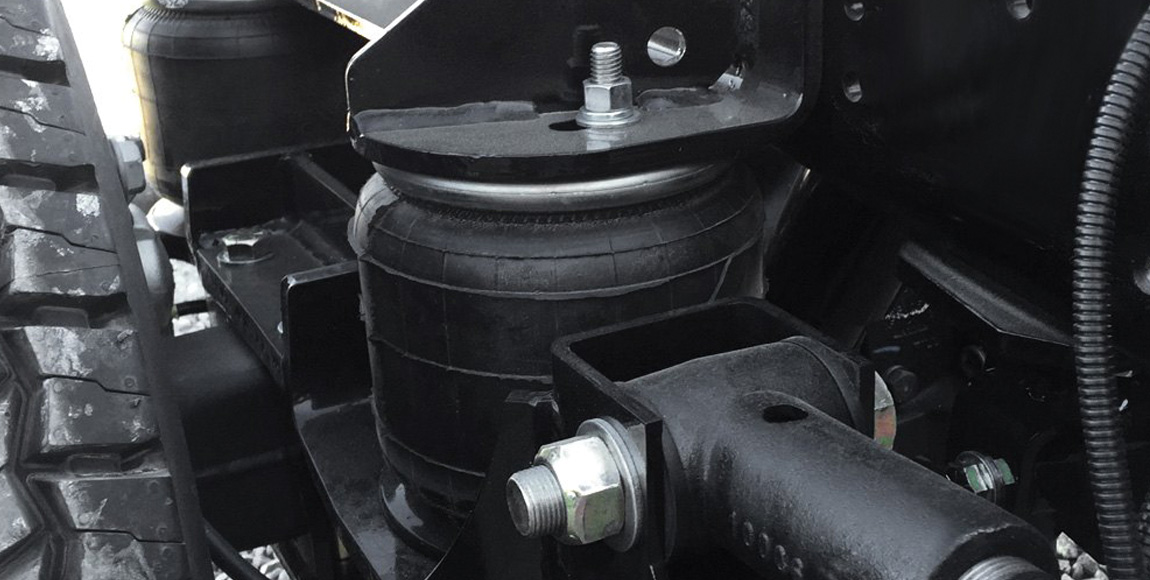Air suspension – an industry standard

In order to provide comfort and control for the driver, while preventing damage to cargo and the vehicle, manufacturers design vehicles with suspension. GARETH GREATHEAD asks what differentiates quality suspension components from cheaper alternatives
Andre Cilliers, MD of BPW Axles, says that 90 percent of trailers sold in South Africa use air suspension. “There are a number of reasons why air suspension has become the standard. Chief among these is that leaf springs work best when loaded, while the ‘spring rate’ on air suspension varies depending on the load and the pressure in the airbag,” says Cilliers.
This makes air suspension suitable for use in a wide variety of operating conditions and loads. “Air suspension ensures that the tyres have optimal contact with the road, which results in better driver comfort, better fuel economy, longer lasting tyres and less wear and tear on suspension components, while minimising the chance of damage to the chassis and the road surface,” says Cilliers.
Time to replace
Suspension components are subjected to a large amount of vibration, especially on poorly maintained roads. As such, suspension bushings require regular greasing and bolts must be inspected regularly.
Cilliers explains: “When suspension components are sold, we provide our customers with a service manual similar to the one that comes with an automobile. This enables transporters to keep track of routine maintenance procedures to be carried out on the suspension components.
“If an airbag has lost pressure, this is easily picked up. However, sometimes overlooked are the shock absorbers (technically called “dampers” – ed.), which should be regularly inspected for oil leaks.”
If the shocks are not in good working order, the wheels will not have optimum contact with the road and will jump around, damaging the tyres and possibly even the chassis and road surface. “A transport operator should consider changing a vehicle’s shocks every three years,” recommends Cilliers.
What to look for when buying aftermarket suspension
There is a large range of aftermarket parts available. Quality ranges from original equipment manufacturer (OEM), to quality aftermarket and inferior pirate parts from markets such as China.
“If the product comes in a plain white box, the distributor has no intention of helping the customer should something go wrong,” says Cilliers. The provision of a warranty with parts means that the distributor has the technical support necessary to stand behind the product.
Ian Smith, parts and accessories manager at Afrit, says: “It can be difficult to tell the difference between a replacement part and the original replacement just by looking at it.
“For example, lubrication of bushes and other
moving suspension components is vitally important. As such, a number of inferior lubricant manufacturers developed greases to cash in on the demand from the industry.
“This led a well-known manufacturer to develop an axle grease that was blue in colour. Needless to say, it wasn’t long before unscrupulous grease manufacturers started colouring their grease blue,” laments Smith.
Cilliers notes: “The technology found on quality suspension components cannot be matched. As an example, BPW uses stretch U-bolts that, once tightened, don’t easily come loose and, therefore, require inspection less frequently. The same technique is used to secure the pivot pin into the hanger.”
He concludes: “Quality aftermarket components enable transport operators to save some money when reconditioning assets that are out of warranty. Having said that, it is important to remember that, while not as costly as OEM parts, quality aftermarket parts are normally not the cheapest either.”
Published by
Focus on Transport
focusmagsa




